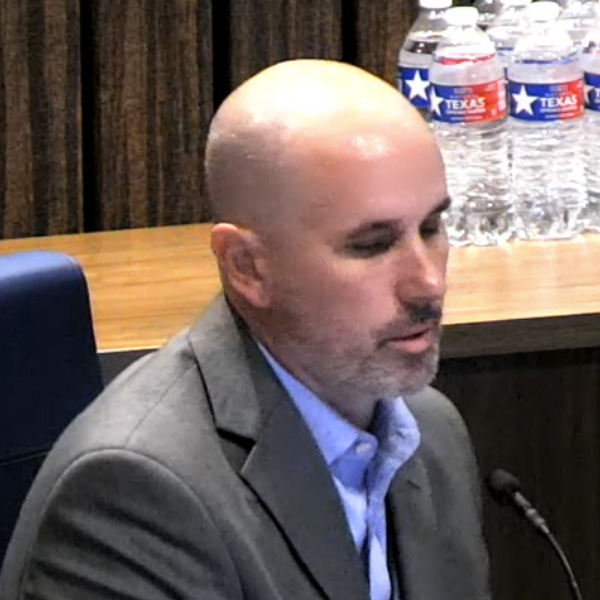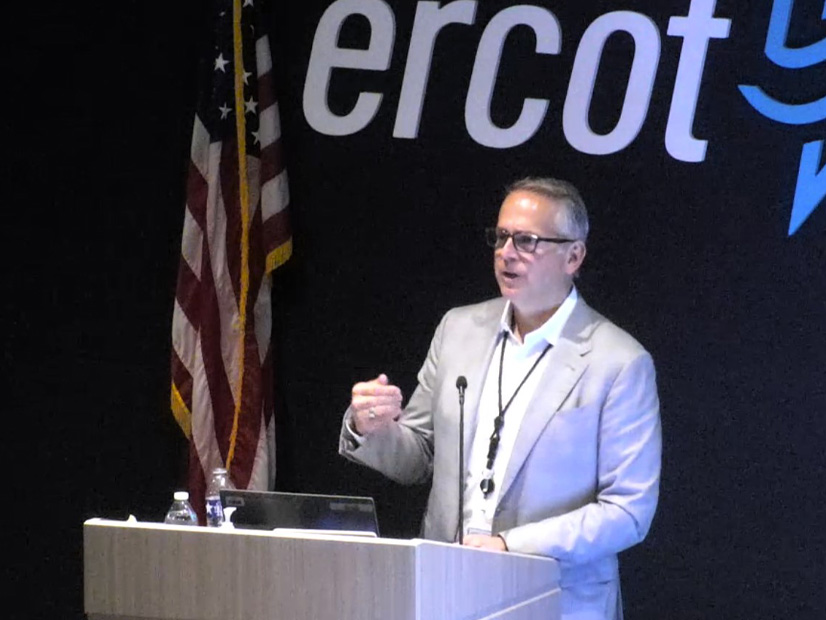Hundreds of projects are in the works across New York to make its grid better able to handle storms and the clean energy transition that state leaders are trying to implement.
Major new lines draw attention with their multibillion-dollar, multi-gigawatt proportions, but they are far outnumbered by their much-smaller cousins. All of the state’s electric utilities are doing this work to some degree; the leader of National Grid’s campaign spoke to RTO Insider about that utility’s plans.
National Grid’s Upstate Upgrade is a portfolio of more than 70 projects announced in March that will continue through 2030. Early components include 115-kV line updates, new and rebuilt substations and supporting work such as access road improvements.
None of these upgrades has the profile of the 340-mile, $6 billion HVDC line being built to import electricity from Canadian hydropower plants, but altogether, the Upstate Upgrade is expected to cost more than $4 billion. And National Grid plans billions of dollars in additional work beyond that.
New York’s efforts to decarbonize are experiencing delays and cost escalations. But if anything close to the projected increases in electric generation and demand materialize, much more than the Upstate Upgrade is likely to be needed.
The state Public Service Commission has authorized upgrades costing billions and has set the stage for billions more in spending through planning processes that anticipate future needs rather than respond to present needs.
Bart Franey, National Grid’s New York vice president of clean energy development, said the Upstate Upgrade consists of two phases, both informed by this need to anticipate future demand.
Phase 1 is refurbishment of older infrastructure that National Grid was going to do anyway for purposes of reliability and resilience but decided to proactively expand in expectation of needs created by the state’s decarbonization policies and goals.
Phase 2 is purely proactive upgrades that might not have been contemplated were it not for the growing demand for clean electricity.
Pockets of renewable power generation are growing in rural areas of New York that are removed from population and industry centers, Franey added, something not anticipated when the grid was built decades ago.
“Not unlike other utilities, our grid is pretty old,” he said. “Its original design was to serve those remote rural communities and industries. Now it’s being asked to export way more power on the same circuit. That bidirectional nature always existed, but rather than serving a couple hundred megawatts, we’re now demanding that it export 1,000 or more megawatts.”
Of interest to the host communities, the upgrades will harden the grid against severe weather. They also will create temporary economic benefits during construction and longer-term development opportunities when the work is completed.
Slow and Costly
A series of reports this summer shows the scope of the task facing New York as it tries to decarbonize and shows the impediments to progress that have been cropping up.
NYISO on July 23 issued its latest System and Resource Outlook. Highlighted in boldface was the assessment that “historic levels of investment in the transmission system are happening but more will be needed.”
The outlook notes that New York’s electricity consumption is expected to increase 50 to 90% over the next 20 years as heating and transportation are electrified; large industrial loads are added in the upstate region; and the installed generation capacity as much as triples.
Also in July, the two state entities in the forefront of the energy transition reported that New York is likely to miss its goal of 70% renewable energy by 2030, perhaps by a wide margin, due to delays and cost overruns.
The state comptroller reached the same conclusion in an audit that also faulted the same two entities for not telling New Yorkers how much the grand vision may cost.
Price tags for individual projects and initiatives are being announced as they are approved, but no estimate has been offered of the total cost of decarbonization in a state that has some of the highest taxes and utility rates in the nation.
It’s also worth noting that upstate utilities have had a fairly static customer base. Census data shows that from 1970 to 2020, the population of the 11 southernmost counties (in and around New York City) grew 14.5%, but the 51 upstate counties grew only 4%,
And most of that growth was concentrated in a handful of places — take away the top four counties and the upstate population actually shrank 0.6% during a half century when the nation’s population grew 63%.
Franey offers a financial equation sometimes used to justify the costs of transmission projects: Putting more load on the grid spreads the cost of operating the grid more widely, lowering the cost for the small ratepayers who do not increase their electric use.
And he rejects the criticism sometimes leveled at transmission projects, that utilities love them for their regulated rate of return. Nothing is guaranteed, Franey said, especially in an era of more frequent and more severe storms.
But the Upstate Upgrade is about more than moving electrons north to south, he said.
“I get it, it’s cost, cost, cost. But I don’t think anyone talks about the value as much as they ought to,” Franey said. “The value that we’re talking about with jobs, the value we’re talking about with increased tax [revenues]. These communities have not seen this type of economic activity — where that generation is being sited and built, where that cheap power is coming in, where those crews are spending their money — in a hundred years.
“What is frustrating for me as a practitioner in this space is, no one is talking about value.”
Beyond the value of the project itself is the value of more electricity becoming available: It facilitates economic development.
The biggest example is Micron’s plan to build a semiconductor manufacturing complex near Syracuse at a cost of up to $125 billion.
National Grid is seeking approval to construct eight new 345-kV underground laterals from an expanded substation to service the site — one to each planned chip fab plant plus one redundant line to each to ensure reliability.
With NYISO projecting a need for installed generation capacity to expand from 40 GW today to 100-130 GW by the early 2040s, a steady demand for new transmission seems inevitable.
“No matter what we do,” Franey said, “we could never overbuild, because there’s just so much demand between a data-driven economy, between large spot loads, between electrification of transport, between electrification of heating, and the new power flow dynamic that’s being set up by renewables being sited remotely from the grid. If we put capacity out there, it is going to get used.”
As a lifelong upstate resident, Franey sees these developments as positive not only for the utility but for a region whose economy has stagnated or declined for generations.
So the clean energy transition is a potentially major change in more ways than one.
“You used to get requests [for] 2, 3 MW, and now it’s like 2 to 3 MW is nothing. Now, it’s just like, hey, can you give us 30?” Franey said. “And again, I don’t think it’s a bad thing. I think that’s actually a good thing. I like to see economic growth. I like to see people using more electricity.”
A Century Old
National Grid is the largest of the five investor-owned electric utilities operating in upstate New York, where its 5,600 employees serve 1.7 million customers under the legacy name Niagara Mohawk, the electric and gas utility National Grid acquired in 2002.
It operates 5,600 miles of transmission lines with 275 transmission substations and 47,000 miles of distribution lines with more than 500 distribution substations across a 25,000-square-mile service area, which is about half the state’s total footprint.
Dial back a century, and the picture is not so impressive.
Thomas Edison switched on the state’s first electric grid in 1882 in lower Manhattan, but 40 years later, dark areas still dotted New York. Dozens of utilities — 59 of which would merge in 1929 to form what is now National Grid — were still extending power lines to rural areas.
One of those was the Taylorville Line, which in 1925 electrified a glacier-carved area of forests, farms and small villages south of the Canadian border.
Some of that original infrastructure remains in service in 2024. Pieces have been replaced for safety or reliability reasons, but the rest is still doing what it has done for 99 years: moving electrons through a sparsely inhabited area from one population center or generation center to another.
The difference now is that these sparsely populated areas are prime real estate for the wind turbines and solar panels New York wants to bring online in large numbers.
The Taylorville Line’s original structures would be replaced as a Phase 2 project to accommodate anticipated renewable generation construction.
“We always say age doesn’t necessarily indicate that the assets need to be replaced,” Franey said. “Having said that, they were built to a different spec, different construction standard, and so now, going in with newer construction standards, you’re modernizing it. They’re going to be hardier; they’re going to be able to weather storms, severe events, much more. Back then it was all about, ‘Let’s electrify the rural areas.’”
The Upstate Upgrade is foundational in many ways, particularly Phase 2 — it is not the final step, but it is necessary groundwork for large-scale decarbonization.
For example, National Grid is beginning to think about virtual power plants but it would be a while before it could create them. For that, it would need more transmission capacity to power more chargers to encourage more people to buy electric vehicles to set the stage for a vehicle-to-grid scheme that would be large enough to be meaningful.
EV adoption so far has been tepid in large swaths of National Grid’s upstate territory.
The best example is Lewis County, which includes the area known as Taylorville.
One state database shows just 79 plug-in hybrid and battery electric vehicles among the 16,560 passenger vehicles registered in the county of 26,582 residents; another shows a total of four public charging stations in its 1,274 square miles.
That is the fewest EVs of any of the state’s 62 counties except nearby Hamilton County, a wilderness area with only 5,100 year-round residents. And even Hamilton County has significantly more EVs registered per capita than Lewis County.
But there are other non-wire solutions that make sense in the near term as National Grid begins the Upstate Upgrade.
Grid-enhancing technologies, for example, can delay the need for new wires while a better picture develops of what the future needs will be and while new technology potentially is developed to meet those needs.
“We are doing a couple of grid-enhancing technologies, dynamic line ratings,” Franey said. “The value proposition there was, it’s not a permanent solution, but it’s a relatively inexpensive solution that gets us to a point where we would absolutely need to make that transition over to a more permanent solution.”
He added: “This is all burgeoning technology. We’re getting comfortable with it. We’re integrating it into the control room operations. We haven’t even gone through a full calendar year hitting all seasons yet, so we’re still learning and adopting it, but we have more in the queue, more in the pipeline. It shows a lot of promise.”


